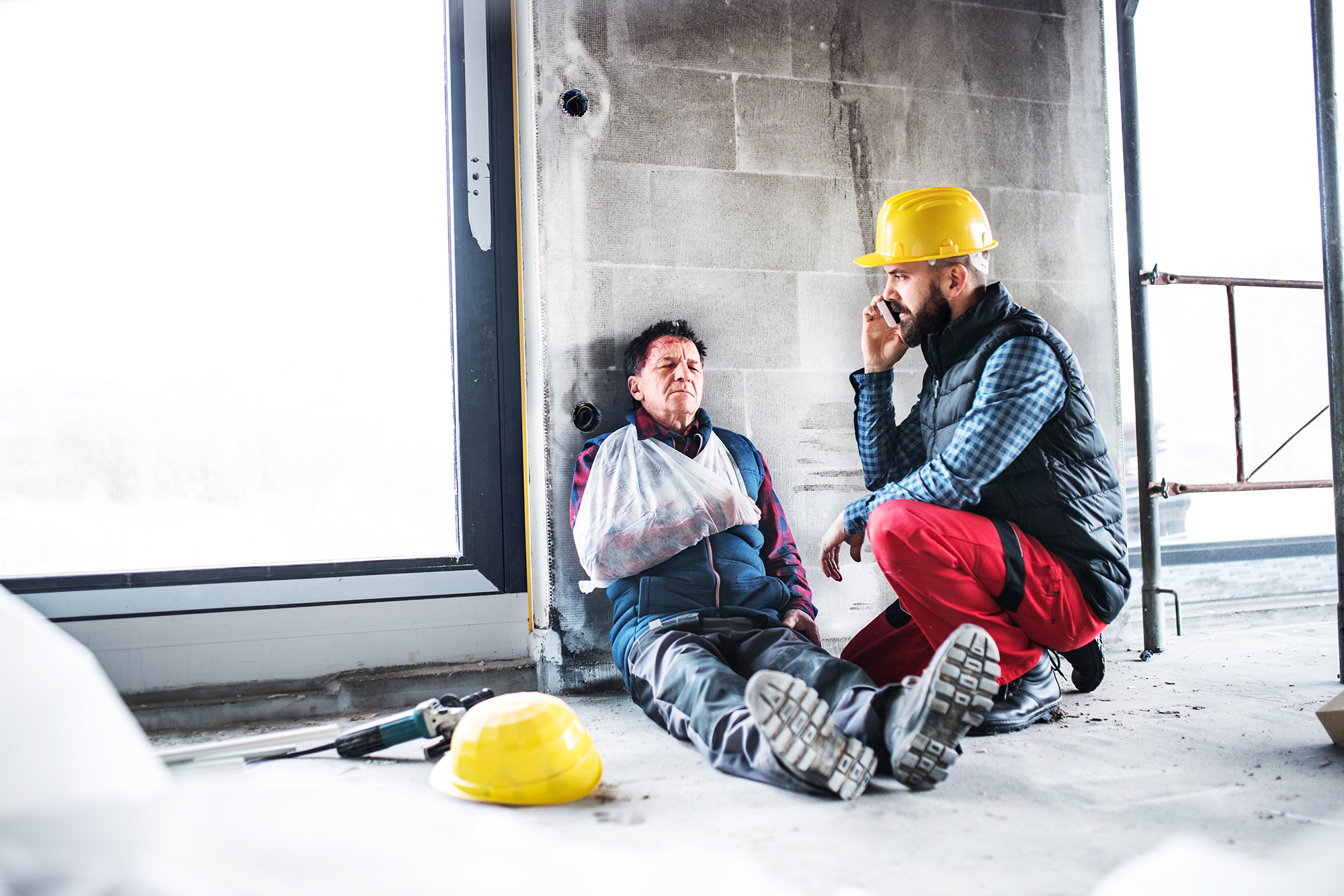BUILDER’S RISK VS. “PROPERLY WRITTEN” BUILDER’S RISK
Unfortunately, builders risk insurance doesn’t get the attention it deserves. Much more time is spent on general liability coverage and getting all of the needed endorsements. While all of the issues surrounding general liability coverage are very important to ensure a successful project, so are the issues surrounding a “properly written” builder’s risk policy.
I think we can all agree that from the start of a project through substantial completion, it is imperative that if that project sustains damage (or any part of it), there is sufficient insurance coverage to put the damage work back in place. This includes the cost of materials and labor. We could rely on each party’s general liability coverage and let the liability insurance carriers determine who was negligent and therefore responsible for the loss. If any of you have had the opportunity to be involved in a liability claim you probably noticed that the first course of action by the carrier is not to admit fault and jump in to help get the project back on track. Typically the liability carriers involved are going to do a thorough independent investigation, sometimes including hiring experts as well as attorneys, with the goal of determining that their contractor was not negligent and point the finger elsewhere. This can be an exhausting process leaving everyone, including the owner of the project, frustrated and wondering if the project will ever get back on track. I hate to sound so negative but that’s just what happens when you introduce the theory of negligence into any claim. A “properly written” builder’s risk policy, by design, is intended to avoid all of that.
PROPERLY COVERED
A key concept of a “properly written” builder’s risk policy is that coverage is not, in any way, predicated on negligence or liability. Wow, what a concept. This policy is designed to pay a covered loss regardless of how it happened and regardless of who did what wrong. The insuring agreement or promise to the policy holder under a “properly written” policy is quite simple. It states the following (or some variation thereof):
We will pay for direct physical loss or damage to “builder’s risk property” caused by or resulting from a Covered Cause of Loss, not to exceed the applicable limit(s) of insurance shown in the Declarations for “builders risk property” while:
1. At or within 1,000 feet of the “project site”;
2. At temporary locations; or
3. In transit
As with most insuring agreements, this is the insurance carrier’s rather broad promise which is then reduced by exclusions. The good news is that as insurance policies go, there are not that many exclusions. The important point is that a “properly written” policy is pretty straight forward in that the carrier will pay for direct physical damage or loss (theft) to the project. Again, and this is important – with no discussion about liability or negligence.
As you have probably noticed, I have put in quotations “properly written” as in a properly written builders risk policy. There are a lot of different variations of coverage and these policies are not standardized. A properly written policy starts with a basic policy that is then modified to provide broader coverage. Here is a very important example. Most builders risk policies have an obligation to pay for direct physical damage or loss to the work. At the same time, most builders risk policies have the right to pursue “subrogation” against any party they feel were negligent in causing the loss. [Subrogation is a term describing a legal right held by most insurance carriers to legally pursue a third party that caused an insurance loss to the insured. This is done in order to recover the amount of the claim paid by the insurance carrier to the insured for the loss.]. Here’s how this works; we have a $35,000,000 frame apartment building being constructed. The owner has a basic, off the shelf builders risk policy covering the project. Halfway through the project the plumber causes a fire and burns the project to the ground. Let’s say the loss is $15,000,000. The owner is paid $15,000,000 by the builders risk carrier. The builders risk carrier then turns around and subrogates against the plumber, looking for their $15,000,000. For the plumber, this just became a general liability claim and he only has $5,000,000 in liability limits. Clearly not a good situation if you are the plumber with the risk/reward coefficient in taking the job – a probable fatal mistake.
UNDERSTANDING THE ISSUES
Under a properly written builders risk policy, we can avoid this happening to the plumber as well as every other contractor on the project. Most construction contracts in addressing builders risk coverage require all parties to “waive their right of subrogation” for claims covered under the policy. This falls under the theory that the builders risk policy should be the only coverage that responds to damage to the project and by doing that, the various contractors involved don’t need to worry about the liability exposure they take on should they cause damage to the project (like our plumber). Unfortunately, just because a contract requires this doesn’t mean it actually happens. Since the builders risk insurance carrier isn’t a party to that contract, this requirement imposes no obligation on their part to amend their policy accordingly. Therefore it is incumbent on the party obtaining this coverage to make certain that the subrogation rights are actually waived by the insurance carrier by asking the carrier to amend their policy accordingly, which most will do. In addition, most contracts require the builders risk to be written in the interests of the owner, contractor, subcontractors and sub-subcontractors. This requires the party obtaining the coverage to specifically have the policy amended to include all of those parties as insureds. This further prevents subrogation as the carrier cannot subrogate against their insured, which now all parties are.
CONTRACT REQUIREMENTS
An important issue if you are the party responsible for providing this coverage, is making certain it is written in accordance with the requirements. If it is not, a breach of contract issue could arise. Many of the builder’s risk requirements commonly found in construction contracts require modification to a basic policy. We talked about two important ones; a waiver of subrogation, and having all parties added as insureds, but there are others. If there is a requirement for Flood and Earthquake coverage; that has to be specifically added. If there is a requirement that certain consequential losses be covered; that too has to be specifically added. If there is a requirement that coverage be extended to materials stored off-site and while in transit, the policy has to be specifically endorsed. The time to review what is required in a contract is not after a loss occurs.
In closing, there is a big difference between a builders risk policy and a properly written builders risk policy. Given the fact that most contractors are good at construction and not-so-much when it comes to insurance, it is very important to be with an agency that understands these issues. We have been working with contractors for over 30 years and we do understand these issues.
About the Author
Share This Story
Related Blogs
OSHA’s Safe and Sound Week Scheduled for Aug. 12-18
Each year, more than 5,000 workers are killed on the job. Additionally, more than 3.6 million employees are seriously injured each year while at work. Because of this, the Occupational Safety and Health Administration (OSHA) holds a nationwide event each August called Safe and Sound Week, which promotes the importance of companies incorporating safety and health programs into their workplace. This year, the event runs Aug. 12-18, 2024.
2024 Midyear Market Outlook: Workers’ Compensation
Profitable underwriting results have generated favorable conditions across the workers’ compensation insurance market for nearly a decade. According to the National Council on Compensation Insurance (NCCI), the segment produced combined ratios of 84.5 and 84.9 in 2022 and 2023, respectively, demonstrating continued profitability.
CrowdStrike, the Most Important Cyber Accumulation Loss Event Since NotPetya, Highlights Single Points of Failure
In what is being called “the most important cyber accumulation loss event since NotPetya,” the July 19, 2024, global technology outage (CrowdStrike) will produce scores of insurance claims across a range of policies, test cyber policy wordings,and sharpen the industry’s focus on single points of failure.








